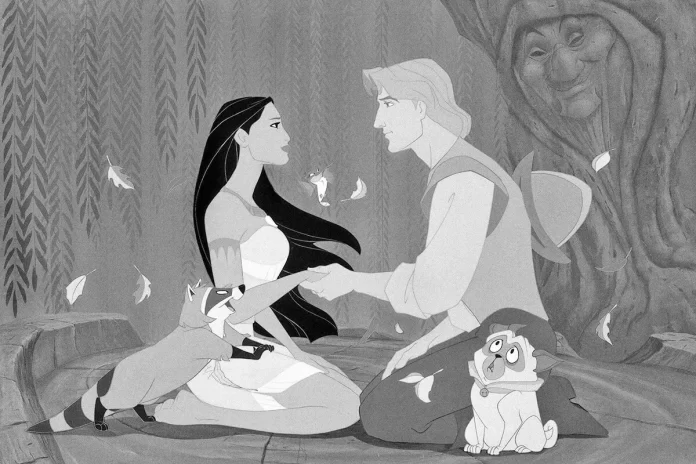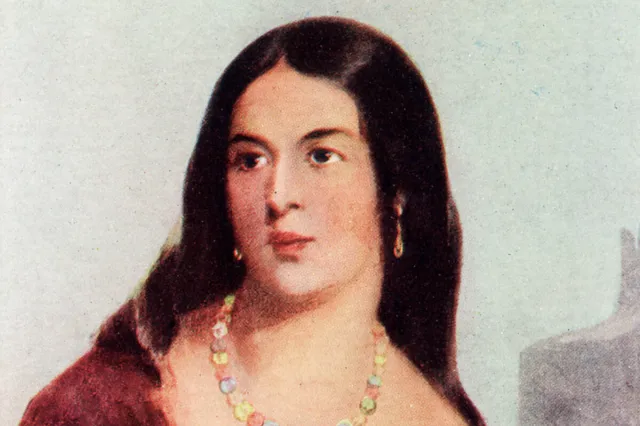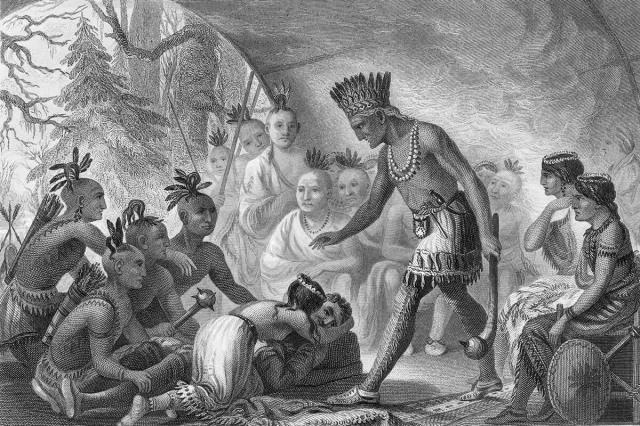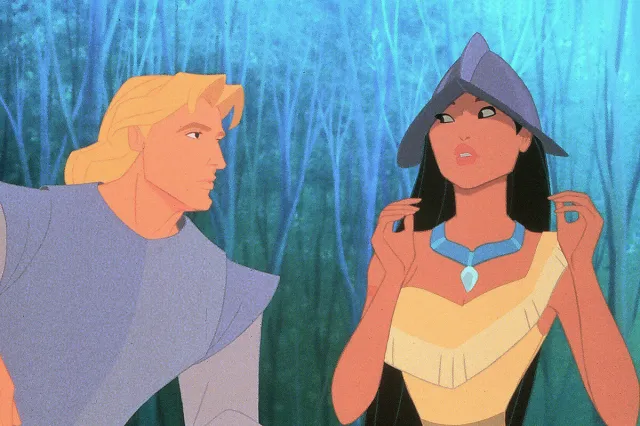Certain Origin Stories Became Central to American Lore, Often Due to Embellishment or Fabrication
The story of Captain John Smith and Pocahontas is one of America’s most enduring historical legends, often framed as a tale of forbidden love and cultural unity. Yet, the truth behind their connection is far more complex, shaped by historical embellishments, cultural reinterpretations, and myth-making. Let’s uncover the reality behind this iconic narrative.
Pocahontas: A Diplomatic Bridge
John Smith arrived in present-day Virginia with the Jamestown settlers in 1607. By the end of the year, he was captured by Powhatan warriors, members of a confederation of more than 30 Algonquian-speaking tribes led by Chief Powhatan, also known as Wahunsenaca. Ultimately, Smith was released as part of a strategy to foster trade and diplomacy between the settlers and the Powhatan people.
During this time, Smith met Chief Powhatan’s daughter, a girl of about 11 years named Amonute, commonly known as Pocahontas. Despite her youth, Pocahontas played a significant role as a liaison between the Powhatans and the English. She visited Jamestown frequently, bringing food and assisting in negotiations. However, tensions eventually escalated, and Pocahontas’ visits were forbidden by 1609. Meanwhile, Smith returned to England after suffering injuries from a gunpowder explosion.
Diverging Paths
In 1613, Pocahontas was captured by English settlers. She converted to Christianity, adopting the name Rebecca, and later married tobacco farmer John Rolfe, with whom she had a son. Her marriage symbolized a temporary peace between the settlers and the Powhatan people. In 1616, she traveled to England with Rolfe and a Powhatan delegation, where she reunited briefly with Smith. Tragically, she died in 1617 from an illness before returning to Virginia.
Smith’s Changing Accounts
Smith’s early writings from 1608 and 1612 depict Pocahontas as an intelligent and lively girl but do not suggest a romantic connection. However, in his 1624 publication, The Generall Historie of Virginia, Smith added dramatic elements, claiming Pocahontas saved him from execution by placing her head over his to prevent his death. This story had been absent from his earlier accounts, leading many historians to question its authenticity. Some believe Smith fabricated or embellished the events to enhance his own legacy.
Romanticization in Popular Culture
The idea of a romance between Smith and Pocahontas took root in the 19th century. Englishman John Davis’ 1803 book, Travels of Four Years and a Half in the United States of America, reimagined their relationship, presenting Pocahontas as older and deeply enamored with Smith. This fictionalized version inspired James Nelson Barker’s 1808 play The Indian Princess; or, La Belle Sauvage, which dramatized their supposed love story.
As the United States sought origin stories to define its identity, the romanticized narrative gained traction. Paintings, plays, and novels portrayed Pocahontas as a symbol of cultural harmony, often focusing on her relationship with Smith. By the time Disney released its 1995 animated film Pocahontas, the fictional love story was firmly embedded in popular culture, though it faced criticism for historical inaccuracies and stereotypical portrayals.
The Historical Truth
Modern historians largely agree that a romance between Smith and Pocahontas is unlikely. Their age difference — she was about 11 when they met, and he was 27 — and the lack of contemporaneous evidence supporting such a relationship suggest their connection was platonic. Pocahontas’ role as an intermediary was crucial to early interactions between the settlers and her people, but the romantic narrative appears to be a later invention.
Why the Myth Endures
The love story of Smith and Pocahontas persists because it appeals to audiences as a tale of unity and cross-cultural understanding. However, the reality is far more nuanced, rooted in diplomacy, power dynamics, and historical reinterpretation. As new perspectives emerge, including those from the Mattaponi Tribe’s oral traditions, the story of Pocahontas continues to evolve, challenging us to separate fact from fiction while appreciating the enduring impact of her legacy.









